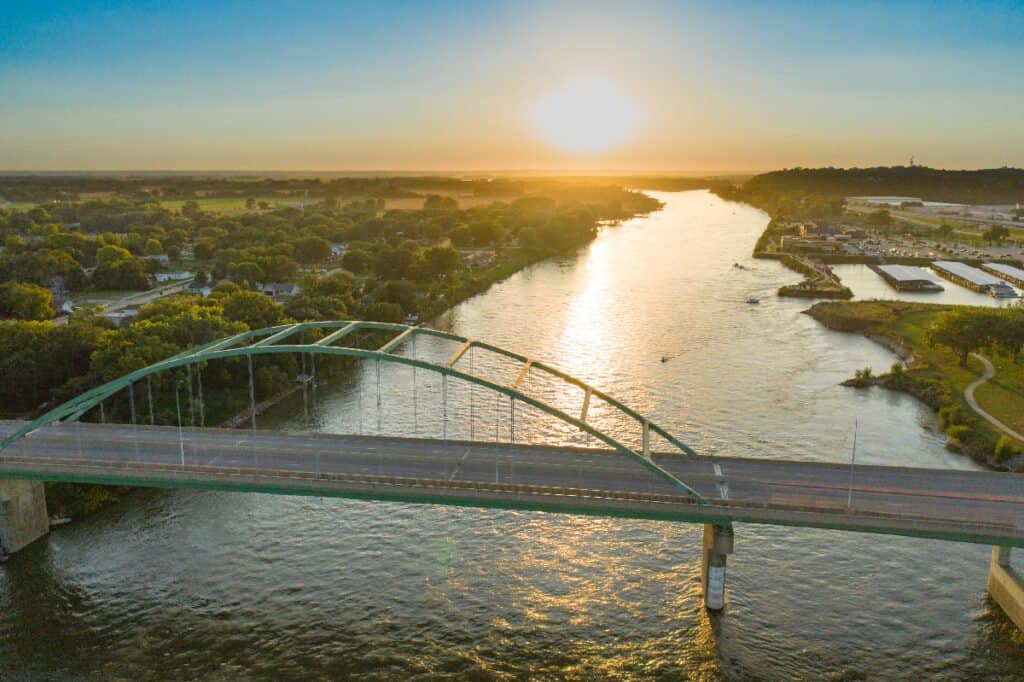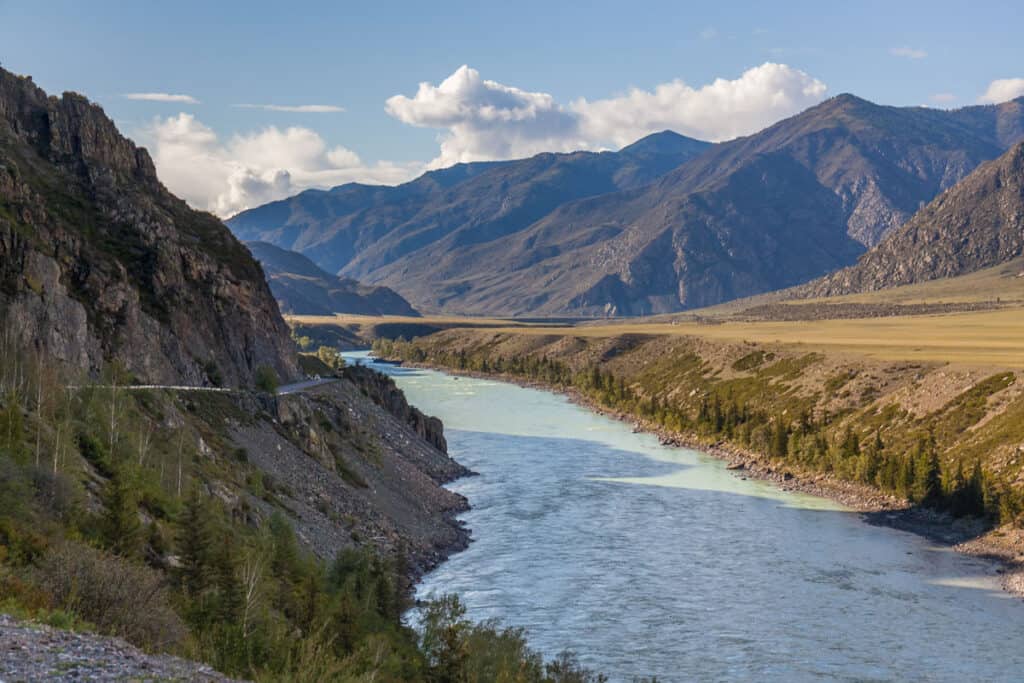Rivers are complex flowing bodies of water with many distinct parts. From the water that flows in them to the confluences that bring them together, understanding the parts of a river is integral to studying them. One of the terms that often come up when discussing a river is the mouth. What is a river mouth? Where are river mouths located? We will answer these questions and go in-depth about one of the most important sections of a river.
End of the Line: What is a River Mouth?

River mouths can end in a delta.
©iStock.com/Hunter Souza
A river mouth is a place where a river flows into another larger body of water. River mouths form when a river meets another river and forms a confluence, when a river flows into the ocean, or when a river empties into a lake.
An example of a river mouth can be found where the Ohio River empties into the Mississippi River. In this case, the river’s mouth is also a confluence. Other times, the river mouth will be when a river meets the sea and creates a delta, such as when the Nile River meets the Mediterranean Sea.
Yet, the end of a river is more complex than it may seem. Sometimes, the mouth of a river isn’t clear-cut. Rivers don’t always flow neatly into another body of water. We’re going to explore what happens when a river mouth occurs at a delta and near an estuary.
How Do River Mouths Form?

The Missouri River’s mouth is the Mississippi River.
©iStock.com/Matthew Howieson
River mouths form as the water flow from a river starts to slow down and deposit mixtures of sediment called alluvium along the discharge area at a river, bay, sea, or ocean. As the sediment piles up and the flow of river water slows, the water will branch off into smaller streams. Each of these streams is a mouth that flows into the new body of water. The whole area where those distributary streams form is a delta, a topic we’ll explore in greater depth.
How Does a River Mouth Differ from a Delta?

A river delta often features distributaries, multiple streaming branches of the river.
©Jeffrey T. Kreulen/Shutterstock.com
As a river approaches its mouth, several changes occur. These include sediment deposits and changes in the speed of the water’s flow. These changes lead to the development of distributary streams, the familiar branching waterways at the river’s end.
The result is that a river mouth doesn’t always integrate into the next body as a single stream. Instead, you will get a delta, a collection of distributaries that stem from the same body of water.
In the case of the Nile River, the Nile River delta is found where the river meets the Mediterranean Sea. Instead of a single powerful flow of water, the sedimentation and changes in flow led to a branching outflow of distributaries into the Mediterranean Sea. The Nile River delta is a collection of all those smaller distributaries.
The Amazon River, one of the longest rivers globally and the one with the greatest discharge rate in the world, has a delta that spews sediment into the Atlantic Ocean. This river’s discharge rate slows, and various streams form, but it manages to discharge enormous amounts of water.
How Large is a River Delta?

The Ganges River leads to the largest delta in the world, the Ganges delta.
©Regien Paassen/Shutterstock.com
Due to their nature of branching off into smaller distributaries, river deltas can vary in size. For example, the Mississippi River delta is about 200 miles long and 85 miles across at the point where it’s widest. However, that’s not the largest delta.
The Ganges River delta is the largest delta globally and measures about 220 miles wide as it empties into the Bay of Bengal.
What is a River Mouth Compared with an Estuary?

An estuary is a transition area before a river’s final destination.
©Juergen Wackenhut/Shutterstock.com
A river mouth is where the river ends, but an estuary is typically a transition area that exists before a river reaches its final destination at a saltwater location. Estuaries are somewhat closed-off bodies of water where rivers and saltwater meet.
Estuaries take in freshwater from the river and are also open to the ocean. However, they do not have to be open to the ocean all year round. Changes in the river’s flow and other factors can keep estuaries landlocked throughout a portion of the year.
To sum up, a river mouth and an estuary are very distinct even though they will occur in the same general area.
Where Do Rivers Start?

The Irtysh River has a headwater in the Altai Mountains.
©iStock.com/Tatiana Sall
Now that we know where rivers end, we need to consider how rivers form. Rivers begin when rainfall in areas with high elevation forms runoff that gathers into streams and flows within a given area. When enough of these streams run into one another, they form the headwater of a river.
A headwater is the furthest stream from the river’s mouth. However, some river sources are simply lakes. For example, Lake Itasca is considered the headwater of the Mississippi River even though there are undoubtedly other streams that feed into the river farther north.
As rivers flow, they gather water from tributaries, streams, and rivers that run into them and grant them more water and sediment to pass down the river. Tributaries can join the river at several confluences, vastly increasing the amount of water carried by the river.
For example, the Ohio River joins the Mississippi River, providing more water to the Mississippi River than any of the other tributaries that flow into it. That includes the Missouri River!
It’s hard to imagine the beginning of these vast river systems. Such small streams form into rivers that flow for thousands of miles, bisect continents, and provide water to millions!
River mouths are notoriously fertile and capable of sustaining a diverse ecology. The importance of river mouths is difficult to overstate. Millions of people live in the areas surrounding those outflows. However, river mouths and deltas are somewhat fragile.
Human interference can often change the way rivers flow, redirecting necessary water flows. Diverting the water impacts the spread of valuable alluvium and freshwater from a given area. Nations need to be mindful of these areas and the precious resource that is river water.
The photo featured at the top of this post is © Jayce Wyatt Photography/Shutterstock.com
Thank you for reading! Have some feedback for us? Contact the AZ Animals editorial team.






